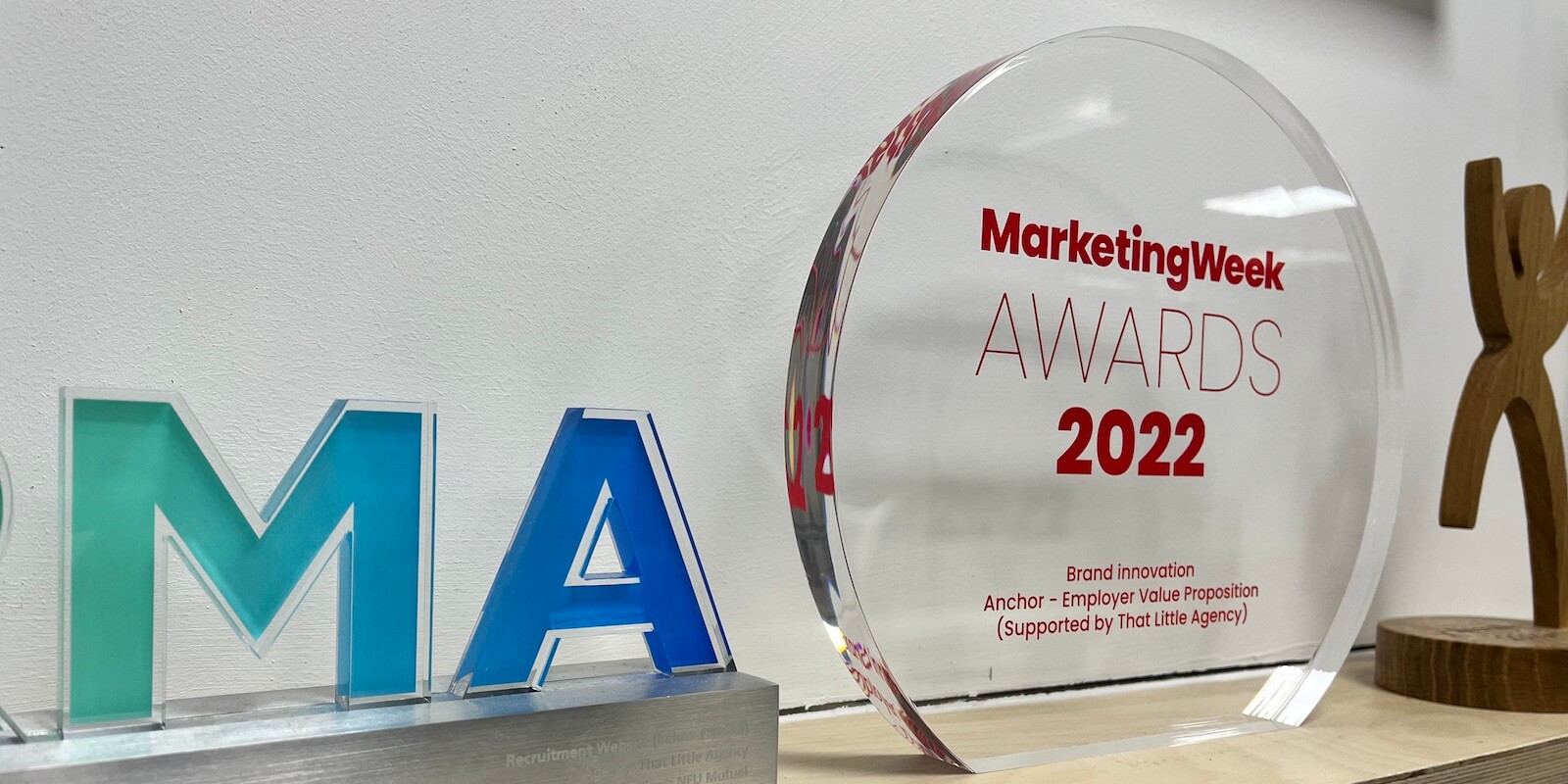Once seen as the responsibility of HR or the resourcing team, the employer brand is increasingly being managed in partnership with marketing. And quite right too! So, if you’re reading this as a marketer wanting to find out more about employer branding, you’re part of a growing trend.
It’s certainly a trend we’ve noticed at TLA Towers. We’re increasingly being approached by marketing teams to help develop the employer value proposition, EVP, employer proposition or the employer brand itself. We’ve even had our work recognised by the Marketing Week Awards. This wouldn’t have happened even a few years ago.
As you’ll discover, the classic customer journey of attraction to purchase applies equally well when marketing to potential employees. We’ll explain what you need to cover to take candidates all the way through to being ‘purchasers’ and advocates of your employer brand.
One brand – different lenses
While we call ourselves an employer branding agency, we’re are not great fans of the phrase. After all, you only have one single brand. That is your logo multiplied by your reputation. But that reputation will differ depending on the lens you are looking at your organisation from. Customers may have one perception. Suppliers another. And employees something different again. This is why we tend to focus on understanding your reputation and proposition as an employer. That’s the lens we’re using when looking at your organsation.
Many organisations come to us with the statement that “nobody has heard of us”. Well, that’s true of the majority of brands. Apart from the select few that everybody has heard of, chances are that only people working in your sector will have a perception of you as an employer. That’s good. It gives us the opportunity to influence the way that people see you. It’s certainly a better place to be than those organisations fighting against the preconception of a poor reputation. Or even one that is misunderstood.
The ROI of a strong employer brand
Great recruitment marketing brings your employer brand to life in a compelling and creative way. It delivers the right message to the right people at the right time, through the right device. But what does it actually mean in terms of what we can measure?
There are some pretty convincing numbers that show the value in investing in your employer brand. We know a strong employer brand helps organisations better recruit new talent as well as engaging existing talent in wanting to stay. But don’t just take our word for it.
- 75% of job seekers consider an employer’s brand before even applying for a job (LinkedIn, 2021)
- 43% decrease in cost per hire (LinkedIn, 2021)
- 28% decrease in employee turnover (LinkedIn, 2021)
- 50% more qualified applicants per role (LinkedIn, 2021)
- 10% decrease in the salary bill (Harvard Business Review 2020)
Developing your employer proposition
As a marketer, you may have been involved with developing a product or service along with a value proposition for it. You’ll have started with some research, taken a look at what your competitors are up to, understood your audience and eventually selected channels to market.
Although the audience and messaging may differ with attracting talent, the process is very similar. Developing an employer brand relies on establishing the building blocks of a strong proposition. For example:
Is it attractive? What you are offering is what your target audience wants and needs.
Is it authentic? What you are saying is believable and credible.
Is it distinctive? Your message is different from your competitors for similar talent.
A quick case study: Anchor Employer Brand
Our work with specialist housing and care provider Anchor was a marketing led employer branding development project. We were approached by their Head of Marketing to help them develop an employer proposition that represented their culture, resonated with their target jobseekers and centered on the people that work there – amongst other things.
The objective was to attract, engage and retain better people. We researched the audiences, developed key themes and developed a creative platform to present the new brand. It went on to win at the Brand Innovation Award at the 2022 Marketing Week Awards.
Read the full story: A workplace where caring is absolutely sharing
Marketing your employer brand
Once you’ve developed your employer brand, it’s time for marketing implementation. The process is often described as ‘recruitment marketing’ or ’employer marketing’ which, if you dig a little deeper into that term, you’ll find a thriving creative industry, of which our little agency is a part of.
Employer marketing is a term we like. It recognises that today’s employer treats the business of attracting talent as a marketing campaign with a strategic approach. It’s how you tell your story through content and messaging to reach top talent and nurture them through the customer (or candidate) journey. It can include your career site, job postings, video messages, social media, images – any public-facing content that builds your brand among candidates. It is the process by which your employer branding gets seen and put to the test.
Employer marketing and AIDA
Describing the customer journey through Awareness, Interest, Desire and Action, is perhaps the best-known marketing model so it makes a good template to illustrate what happens in a candidate context. You have to have every stage covered and remember that, just like any customer, a candidate could leave the process at any point. That’s why you need every touchpoint covered with a consistent experience of that brand.
Awareness: You are drawing interest – from passive as well as active jobseekers. It’s a crowded market with candidates exposed to a lot of messaging. At the awareness stage you can’t expect a huge amount of their time, so you’d use tactics like video, social media, bus posters – as did for Anchor, content shared on LinkedIn and of course actual job adverts. Employer brand awareness on LinkedIn is a whole topic of its own, please see our article: Promoting your employer brand on LinkedIn.
Interest: You have their attention, now develop their interest. Have they landed on your careers site – is there a blog you could develop profiling your people and the work they do? Could you elaborate on aspects of your culture, purpose and values so that candidates feel like they would fit in. For example, how do you demonstrate diversity and inclusion? More than three out of four job seekers and employees report that a diverse workforce is an important factor when evaluating companies and job offers. If this is something you’d like to know more about, then read another TLA article: Reflecting diversity, equity and inclusion in your employer brand.
Desire: Maybe another D is more relevant here. Decision. You want your candidate to decide either way. If they are not right for you, good recruitment marketing will give them the facts or intuition that you aren’t the organisation for them. This saves everyone’s time. On the positive side, what else can you show or tell them to encourage them to decide to apply or at least find out more? We think a good careers website, with clear job search and content is often that deciding factor. A good careers website offers a seamless candidate experience all the way through. We’ve covered the best practice tips in our article: Five ‘must have’ features for careers website best practice.
Action: Or let’s substitute this with Apply. It’s the end of the journey and the measure of your recruitment marketing strategy. It’s customer conversion time so don’t lose them at this point. However, this is what can often happen. You wouldn’t put your customers through hurdles to buy online, so why do it with a clunky application process? Keep the process as slick and seamless as you can and remember that, even after they’ve applied, they can lose interest. You need to manage their application with a level of respect for the time that they’ve put in. The days of sitting on applications for weeks are long gone. For a smooth candidate experience from awareness to application, read our article: Five careers website features that enhance the candidate experience.
In conclusion
We hope we’ve shown how candidates are customers of the employment part of your brand. In reality the strategy you need to attract and engage them is very much a marketing strategy. That’s why we’ve seen more and more marketing teams get involved in the nuances of employer branding and recruitment marketing. We’ve known it to be a highly creative sector for years. If you’d like to know more about our approach and who we work with, please get in touch. We believe every employer has a story to tell. We’d love to help you tell yours.
Employer branding articles and guides
If you are new to our little agency, you may not know that we have some really useful resources available to you. Blog articles that cover diverse subjects like building your employer brand to creating an engaging careers blog. It should help you quickly become the go-to person on all things employer branding.
There are limits to what a single article can cover, so why not get beneath the surface of employer branding with these articles and guides.
Building your employer brand. A ten-point checklist
10 things to consider when refreshing your employer brand
The careers website blog. Your employer branding secret weapon
Need a little help?
If you feel that you’d like some help, support or even a little chat around building your employer brand and next careers website or any aspect of your talent attraction strategy just drop us a line. After all, much of our best work has started with a cup of tea and a Zoom call.


